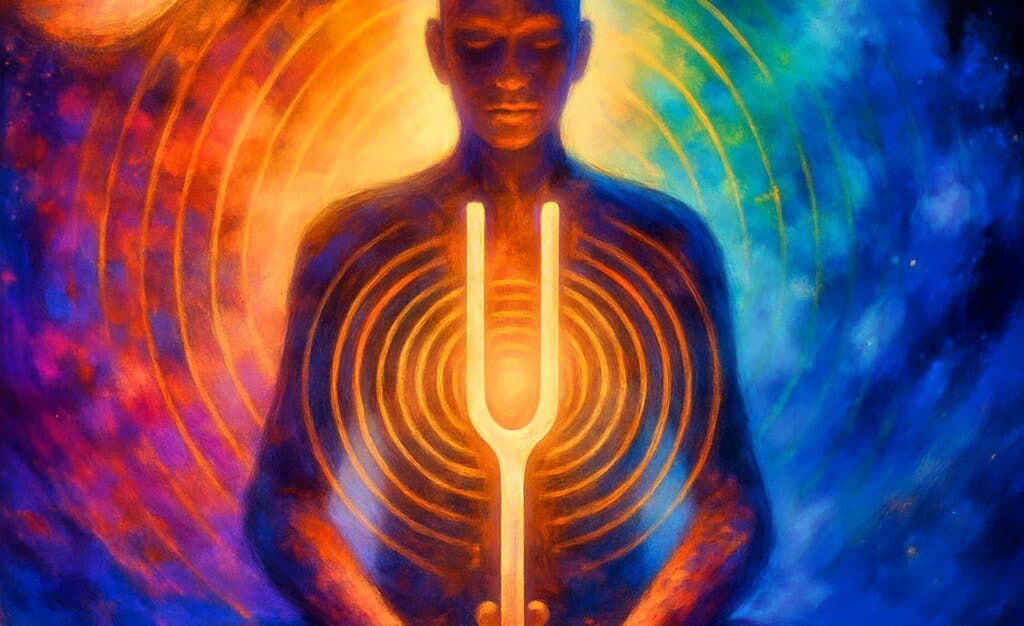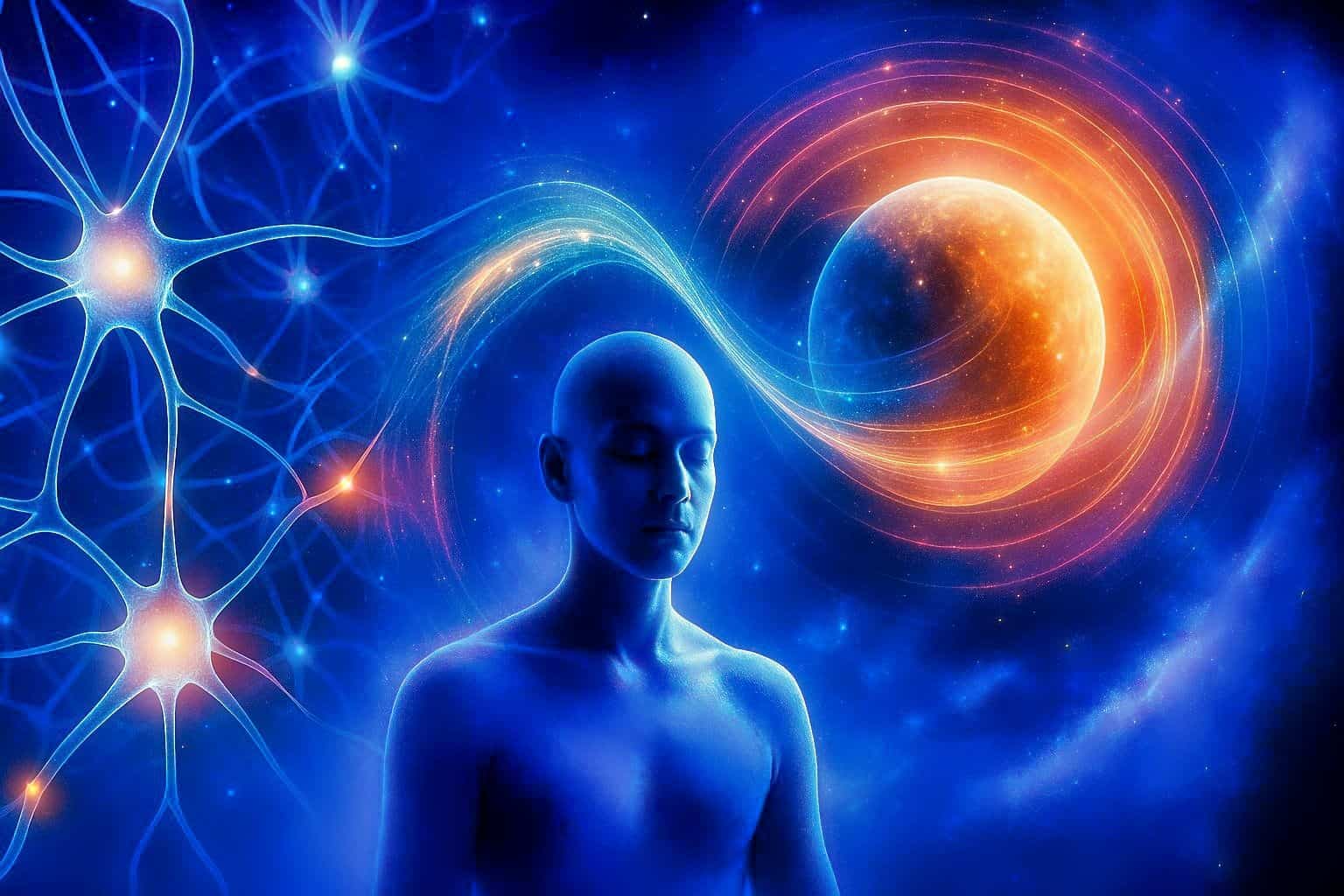Bridging Neuroscience and Quantum Theory Through Meditation
Modern science has split into two powerful but seemingly incompatible languages. Neuroscience speaks of synapses, networks, and electrochemical signaling. Quantum physics, meanwhile, whispers of entanglement, superposition, and a universe that responds to observation itself.
But there is one ancient practice where these worlds begin to touch: meditation.
Could meditation be the experiential bridge between brain and cosmos—between measurable circuitry and the mysterious quantum fabric of reality?
The Mind that Observes Itself
Neuroscientific studies show that meditation physically reshapes the brain. It thickens the prefrontal cortex, calms the amygdala, and modulates activity in the Default Mode Network—the brain’s self-referencing loop. Brainwave patterns shift. Neurotransmitters rebalance. The self, as a narrating function, loosens.
Meanwhile, in quantum theory, the act of observation changes the outcome of particle behavior. The famous observer effect suggests that awareness may play a fundamental role in how reality unfolds.
Could it be that meditative awareness, turning inward, isn’t just self-reflection, but a kind of participation in the very fabric of existence?
Consciousness is Fundamental
Most neuroscientists view consciousness as an emergent phenomenon—a product of complexity in neural networks. But some quantum theorists (and mystics before them) wonder: what if consciousness is primary, and the brain is more like a receiver than a generator?
The Penrose-Hameroff Orch-OR theory suggests that quantum computation within microtubules could give rise to conscious experience. Though controversial, it gestures toward something ancient spiritual traditions have long proposed: that consciousness may not be confined to the skull.
Meditation becomes more than relaxation. It becomes attunement.

The Tuning Fork of the Self
When we meditate, especially with sound—as in chanting OM or HU—we’re not just calming the mind. We are vibrationally engaging the nervous system, possibly even tuning resonant structures in the body down to the cellular or quantum level.
Quantum coherence, as observed in biological systems such as photosynthesis, demonstrates that living systems can maintain quantum states. Could the meditating brain be another such system—briefly more coherent, more open, more resonant?
In that moment, the boundary between subject and object, self and world, may thin.
A New Paradigm, Rooted in the Ancient
This isn’t an argument for abandoning science. Quite the opposite. It’s a call for deeper integration. What if contemplative practices can help us understand consciousness not just as a biological function, but as a field of participation?
From this perspective, meditation is not just a brain hack. It’s a cosmological inquiry—a way of listening to the hum beneath matter.
Experience Is the Bridge
The scientific models are far from complete. The quantum theories are still speculative. But what we do know is this: people who meditate report feeling more present, more interconnected, more spacious.
That shift doesn’t require a PhD to validate. It simply requires a quiet moment.
In Good Vibrations: Primordial Sounds of Existence, we invite you into this space directly. Through sacred sound and embodied attention, the practice becomes the portal. You don’t just study coherence. You feel it.
Where neuroscience maps the terrain and quantum physics evokes the mystery, meditation walks the path in real time.
Let your body become the bridge.
Explore the resonance of HU and OM through guided practices in Good Vibrations.
Download a free chapter at HarpGnosis Books
John Harper is a Diamond Approach® teacher, Enneagram guide, and a student of human development whose work bridges psychology, spirituality, and deep experiential inquiry. He is the author of The Enneagram World of the Child: Nurturing Resilience and Self-Compassion in Early Life and Good Vibrations: Primordial Sounds of Existence, available on Amazon.

